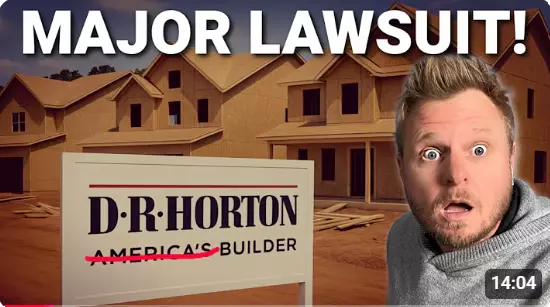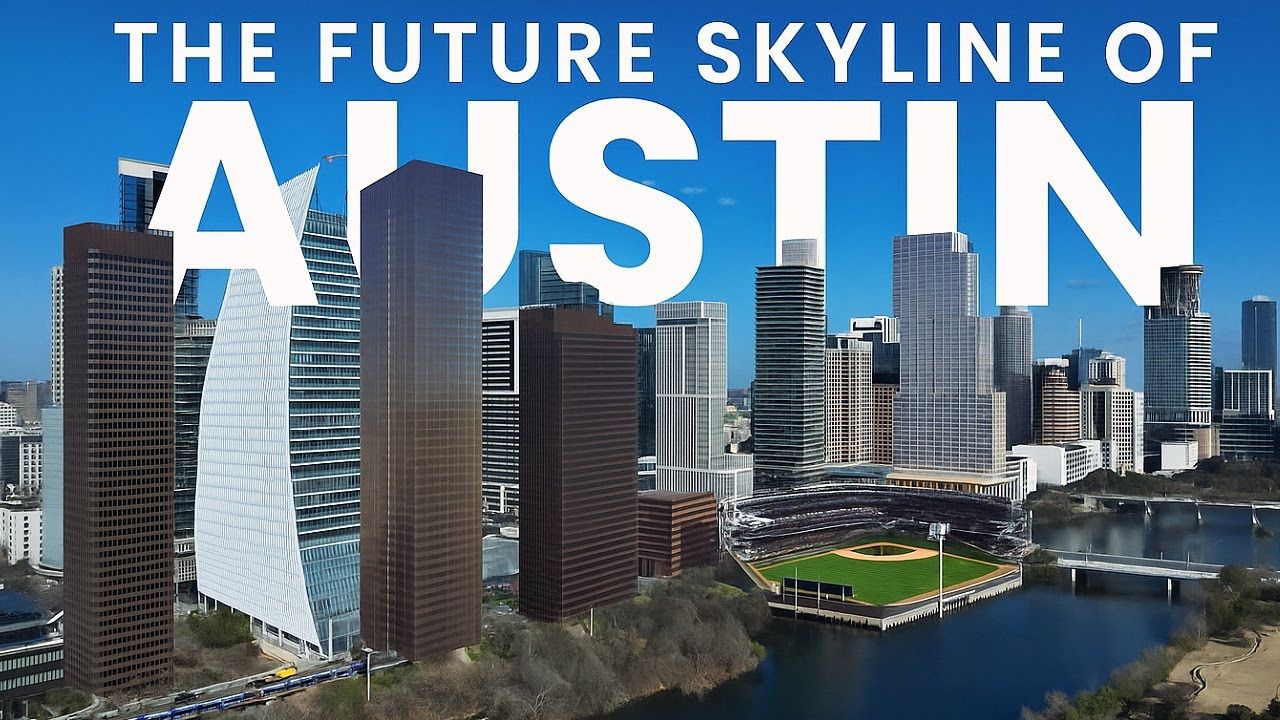Everything NEW and Coming SOON To Austin 2025/2026
Austin, Texas, is experiencing significant changes, and some of these shifts are making the city denser and more populated. With so much growth happening around us, the question is: Does this make Austin better, or is it turning the city into something it wasn’t meant to be? Today, let’s dive deep into the major projects coming to Austin, the city’s push for density, and how these changes might affect you, whether you're a local, an investor, or someone thinking about moving to Austin.
The I-35 Expansion: A Blessing or a Nightmare?
Let’s start with the much-debated I-35 expansion, which is set to completely change the flow of traffic in Austin. I-35 has long been the city's main traffic artery, but the expansion project, aimed at addressing congestion, is already generating controversy.
Recently, the city revealed a scaled-back plan for the much-anticipated Cap and Stitch project, which initially promised to cover the highway with parks and public spaces, reconnecting East Austin and West Austin. However, due to funding limitations and political challenges, only two sections will be capped, leading to a much smaller impact than originally envisioned. This decision has left many questioning whether the project is truly addressing Austin’s transportation needs or simply pushing development further at the cost of walkability and public spaces.
What's the verdict? Is the I-35 expansion an effort to modernize the city’s infrastructure, or is it a half-baked attempt to solve the wrong problem? The debate rages on, and your input matters. Do you think I-35 needs to be revamped, or should the focus shift to more sustainable solutions?
The $7.1 Billion Light Rail: Is Austin's Train Project Really Going to Transform the City?
Next up is the Austin Light Rail project, which has been touted as a game-changer for the city’s transportation. The $7.1 billion rail system is moving forward, but already, some promises made during the campaign have been scaled back. Originally, the plan included an extension to the airport and connection to the soccer stadium—neither of which seem likely now, leaving many to wonder if the project is worth the investment.
The rail route will stretch 9.8 miles and include 15 stations, but the funding gap is still wide, with half of the total cost yet to be secured. Is it worth investing billions into a project that may not even meet all of its original goals? Will Austin’s light rail system truly alleviate traffic congestion, or is this just another expensive undertaking that won’t deliver on its promises?
What do you think? Will the light rail ultimately improve Austin’s traffic issues, or will it end up as another costly project that doesn’t live up to the hype?
The Center City District Plan: A New Era for West Campus and UT
Austin is also looking to expand downtown into areas like West Campus and parts of the South Central Waterfront. This move is part of the Center City District Plan, which aims to rezone parts of Austin for higher-density development, including highrises, office towers, and mixed-use projects. Developers are building taller, prices are rising, and the city wants to guide this growth rather than react to it.
While the idea of revitalizing these areas might seem appealing, it’s also a double-edged sword. The move could result in higher rents, increased pressure on what remains of Austin’s student housing, and further gentrification of neighborhoods that have long maintained a quirky, college-town charm.
Is this a good idea? Should we embrace the expansion of downtown into these historic, student-centric areas, or should we preserve the unique character that makes West Campus and the UT area stand out?
North Austin's Density Push: The Bingo Hall Redevelopment
Meanwhile, North Austin is also undergoing a transformation, as Anderson Square, the strip center with a Hobby Lobby and Planet Fitness, is set to become a vertical mixed-use tower. The project will include 24,000 residential units, 2.4 million square feet of office space, and retail and hotel options. It’s an ambitious plan, aiming to create a dense, walkable community just a stone’s throw from the North Lamar Transit Center.
This project is just one of many similar efforts throughout Austin to create transit-oriented developments. However, is this level of density necessary, or is it pushing the city further away from its roots?
What do you think? Should North Austin embrace this type of urban development, or do we risk losing the charm that makes the area unique?
Waterfront Development: Changing Austin’s Skyline
Another major point of contention is the waterfront development happening along Lady Bird Lake (also known as Town Lake). Two massive projects are currently in the works near the waterline, including the 305 South Congress project, which could bring a 600-foot tower with 900 residential units, office space, a hotel, and retail.
Meanwhile, just across from the Austin American-Statesman site, the city is considering another $2 billion redevelopment. This project would add six massive towers and 1,478 residential units, making it one of the largest waterfront developments Austin has seen. However, environmental groups have raised concerns about the lack of public input and the potential for further height restrictions and zoning changes.
Do we need more waterfront development? Is this expansion enhancing Austin’s skyline, or will it be a blight on the city’s iconic views?
Skyline Changing Towers: The 66-Story Building
The 66-story tower planned for downtown Austin at 701 West 6th Street is another massive project that could change the city’s skyline. The project promises 413 residential units, ground-floor retail, and an incredible floor area ratio of 30:1. While the building’s scale is certainly ambitious, it also raises concerns about the impact on the Capitol View Corridor and whether it will fit within Austin’s charm and aesthetic.
Are you excited about the new towers and high-rises coming to downtown Austin, or do you think these projects are pushing Austin too far from its original vision as a laid-back, tech-forward city?
Conclusion: Is All This Density Good or Bad for Austin?
Austin’s rapid expansion and density push are undeniably changing the fabric of the city. While some projects, like the I-35 expansion, light rail, and downtown development, aim to modernize Austin’s infrastructure, others are raising concerns about affordability, gentrification, and the loss of character.
Ultimately, whether or not these changes make Austin better or worse depends on how they are implemented and how the community reacts to the challenges they bring. As the city grows, it’s essential for residents and developers to work together to ensure that Austin remains a vibrant, inclusive, and sustainable place for everyone.
I’d love to hear your thoughts—are you for or against the density push in Austin? Do you think these changes are helping the city, or do they risk eroding what makes Austin unique? Let me know in the comments below, and be sure to follow this channel for more updates on the Austin housing market and city developments.
Categories
Recent Posts












